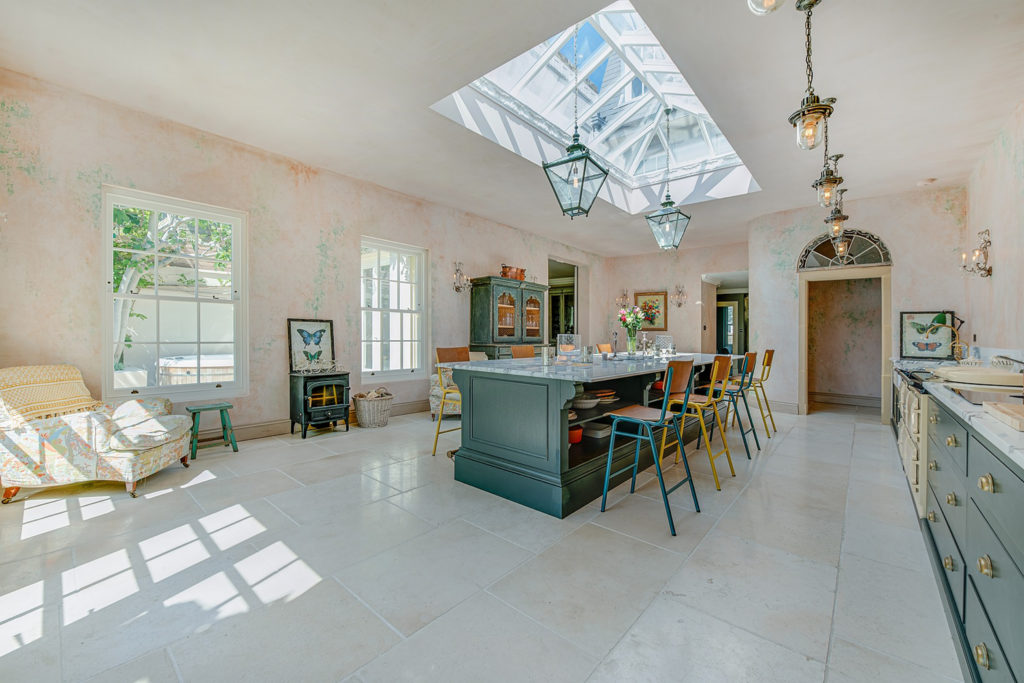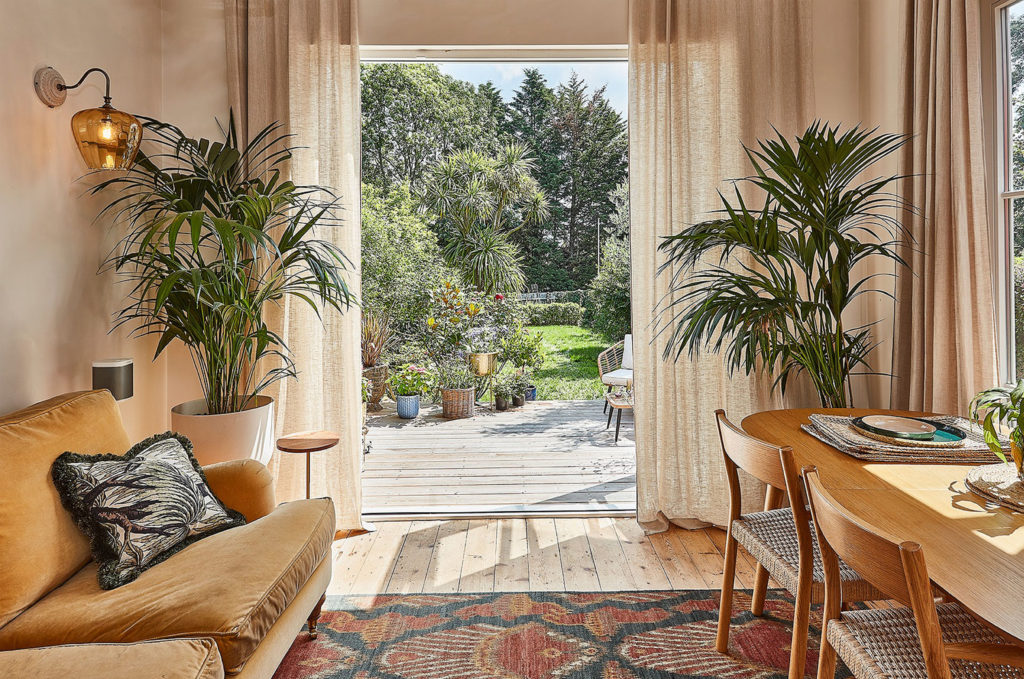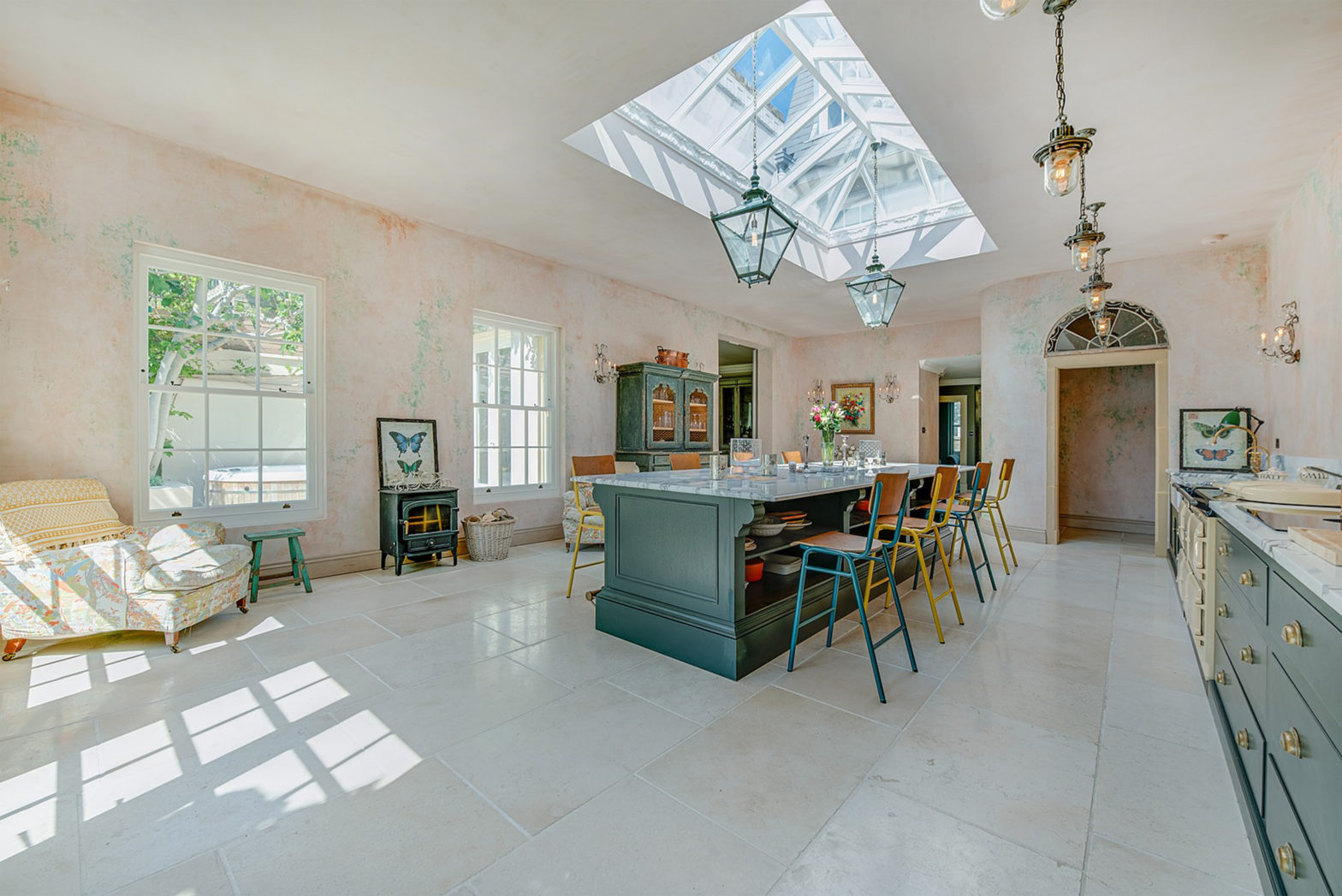Over the past few years, it’s become increasingly popular to use natural materials to finish the home. Stepping away from stark whites and minimalistic decor, we’re seeing materials like wood, exposed brick, terracotta and stone being incorporated to add texture. Plaster feels like a natural evolution of this trend, acting as a simple way to add character, warmth and a modern but rustic appeal. The great thing about plaster is that it will suit most homes and is a great way to warm up a space; take a look at our shoot location Hanover below, which features a beautiful, peachy plaster finish across its open-plan kitchen/ dining room.

How can you achieve this effect?
Well, if you’re renovating, you can simply leave the plastered walls unpainted, leaving behind a true, raw effect. However, if this is the approach you want to take, you should first discuss this with whomever is building or decorating your place, as you’ll need to ensure that the type of plaster being used is one which will work with the space.
The second way you can achieve this look is…paint! Paint can be transformative; take our location Half Acres – previously a cool blue space, the owners used Dulux Heritage paint (Pale Nutmeg as the base coat, followed by Pale Walnut) to completely alter the atmosphere of the room. See the before and after below – what a difference!

Types of Plaster
Now, we’re no experts on plaster or its application, but we thought we’d give you a run-down on some of the types of plaster available, just to get you thinking about which route you might possibly take.
Lime Plaster
Lime plaster is a timeless choice, composed of lime, sand and water, employed for millennia due to its breathability.
Gypsum Plaster
This is the most widely-used option. It’s less breathable but ideal for contemporary homes and extensions, providing a smooth finish with its distinctive pink appearance.
Cement Plaster
Cement plaster is a blend of sand, cement and water, setting quickly. While achieving a smooth surface is more challenging, it can be used in conjunction with Gypsum plaster for a best-of-both-worlds hybrid finish.
Clay Plaster
This is an eco-friendly alternative, crafted from natural clay, sand and pigments.
Venetian Plaster
This kind employs a traditional technique, using fired limestone and water, offering a diverse colour palette through pigments.
Tadelakt Plaster
Tadelakt plaster, often referred to as Moroccan plaster, is an ancient method that yields a naturally beautiful and rustic finish.
If you’re interested, you can find out more about the different types of plaster here.

Paint Options
Have you heard of Bauwerk? This brand of limewash paint is a great option for a repaint. It’s an eco-friendly paint that works on walls, masonry and bricks. They have a huge range of colours available, so you can get creative.
Farrow & Ball – Setting Plaster
This is a classic paint choice that’s grown in popularity over the last few years. The Setting Plaster is a dusty pink, calling after ‘the blushing walls we often admire in newly plastered houses’. It does what it says on the tin!
This is another great option for an earthy plaster colour, also inspired by (you guessed it!) ‘the natural pigment of lime plaster’.

At 1st Option, we have some incredible shoot location houses which showcase wonderful examples of plaster amongst their decor. If you’d like to see more, we’d highly recommend checking out our shoot locations Blockwork, Capri, Casa, Cotton Studio and Inde. That’s not it, though – we have so many more shoot locations that feature plaster walls – you can find the rest by browsing through our ‘plaster’ filter here.
If you’re still seeking inspiration for interior design and decor, you might want to check out some of our previous blog posts, for example our feature on pastel paint shades and Mediterranean-inspired design.
Well, that’s it from us today! We hope you learned a good deal about this prominent interior trend and that you’re feeling inspired for your next interior project!
